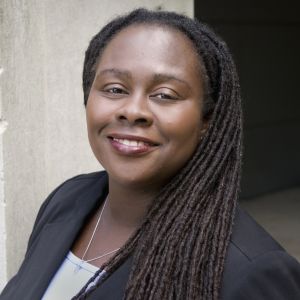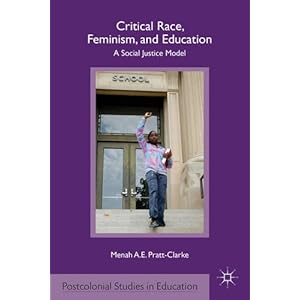The New York Times web site today includes an article highlighting some of the costs associated with same-sex couples’ recent victory in their fight for marriage equality under the federal tax laws. The article is interesting but misses the larger context—because these costs are a natural concomitant of a piecemeal approach to marriage equality and are in no sense either unique or new.
Before explaining this point, let me give you some background on the issue the article covers. The article explains how the IRS last year decided that same-sex couples whose relationships are legally recognized and who live in community-property states (e.g., California) can now file federal tax returns that split all of their income equally, just as married different-sex couples in those states can choose to do. This decision accords respect to the state property law treatment of these couples, which basically deems property acquired during the relationship to belong equally to the members of the couple. If the members of a same-sex couple have unequal incomes, this can result in an overall federal tax savings for the couple (because some of the income of the higher-income partner can be shifted to the lower-income partner and be taxed at lower rates). Notably, this represents a complete reversal of the position taken in a ruling issued during the Bush administration, which refused to recognize state property law as applied to same-sex couples (even though these same state property laws have long been recognized for federal tax purposes as applied to different-sex married couples). Naturally, at the time, this reversal was viewed as a victory in the battle for marriage equality.
The article then, however, goes on to explain all of the hassles that same-sex couples will now experience because of this ruling–and that their different-sex married counterparts are spared. Because same-sex couples have no box to check on their returns to indicate their relationship, they will have to attach some sort of explanation of the splitting of their income to their returns. This is an extra compliance burden that will likely prevent same-sex couples from being able to file electronically and that will often require them to hire an adviser to help correctly complete their returns. Otherwise, they are very likely to be the subject of IRS audit because the amount of income reported on their returns will not match the amount reported to the IRS by employers and others (e.g., banks).
(Not to mention that many IRS employees do not seem to be aware of this policy change, which means that even further explanation for the splitting will be required. This problem is likely the result of the IRS’s wholesale refusal to provide generally applicable, public guidance to same-sex couples, a practice that was recently the subject of harsh criticism from the National Taxpayer Advocate.)
And, of course, there are already nightmarish tales of people who have experienced just these problems. Married different-sex couples don’t experience these problems because they are required to either file their returns jointly, in which case all of their income is reported together, or to file separately and check a box on the return indicating that they are married and include the name and Social Security number of their spouse on their returns. This makes it easy for the IRS to see that all of the income was reported between the two returns.
As mentioned at the beginning of this post, the imposition of such costs as the price of achieving equality are neither unique nor new. Until now, same-sex couples who live in states that recognize their relationships have experienced extra costs in filing their state tax returns. Because the federal government still refuses recognition to same-sex relationships, as such, for federal tax purposes and most states with income taxes piggyback on the federal income tax, married same-sex couples in states that recognize their relationship have often had to complete not only two separate federal income tax returns for filing with the federal government, but also a “mock” joint federal income tax return to use as the basis for (and which often must be attached to) their joint state income tax return. (One of my students wrote a note on this issue a few years back. See Catherine Martin Christopher, Will Filing Status Be Portable? Tax Implications of Interstate Recognition of Same-Sex Marriage, 4 Pitt. Tax Rev. 137 (2007).) Indeed, I blogged a couple of years ago on problems that Connecticut civil union couples had with H&R Block when filing their state tax returns.
More of the same can be expected if the appeals courts uphold the recent federal district court decision in Gill v. Office of Personnel Management, which held the federal Defense of Marriage Act unconstitutional as applied to several married Massachusetts same-sex couples who were unable to file joint federal income tax returns. This decision holds the promise of extending marriage equality to same-sex couples for purposes of all federal law, including tax law. But, because that decision involved an “as applied” challenge to the federal Defense of Marriage Act, it is unclear how it will be applied to same-sex couples outside of Massachusetts. Will it only apply to same-sex couples who reside in other states that legally recognize their relationships? Will it apply to all same-sex couples who are married, even if their home state does not recognize their relationship? If it applies to all same-sex couples who are married, no matter where they reside, how do you make that determination? What about couples who, at the time of their marriage, lived in a state that adamantly refused legal recognition to same-sex relationships and went to another state (e.g., Massachusetts) to be married, immediately thereafter returning to their home state? What if the relevant conflict of laws rules would invalidate such an “evasive” marriage? What if, instead, the couple leaves their home state to be married in another country (e.g., Canada)? Would the federal government recognize that marriage as a matter of comity? These are all thorny issues that would need to be resolved. But by whom? Would the courts provide guidance on this? The IRS? Or, again, would it essentially fall to taxpayers to hire lawyers (at great expense) to determine the impact of this decision on them?
And, if the federal government ends up recognizing same-sex relationships that are not recognized by the state where the couple resides, then we will end up with the converse of the current situation. In other words, same-sex couples will be able to file joint federal income tax returns, but then may end up having to fill out two “mock” separate returns to form the basis for (and that must be attached to) their separate state filings because their home state does not recognize their relationship.
So, the article on the Times‘s web site is interesting and highlights a problem that already exists and, from all indications, will not be going away any time soon. Sometimes the path to equality requires you to take a couple steps back every time you take a step forward.
-Tony Infanti


 Various
Various 

 Unruly Girls, Unrepentent Mothers, a companion to Kathleen Rowe Karlyn’s groundbreaking work, The Unruly Woman, studies the ways popular culture and current debates within and about feminism inform each other. Surveying a range of films and television shows that have defined girls in the postfeminist era—from Titanic and My So-Called Life to Scream and The Devil Wears Prada, and from Love and Basketball toUgly Betty—Karlyn explores the ways class, race, and generational conflicts have shaped both Girl Culture and feminism’s Third Wave. Tying feminism’s internal conflicts to negative attitudes toward mothers in the social world, she asks whether today’s seemingly materialistic and apolitical girls, inspired by such real and fictional figures as the Spice Girls and Buffy the Vampire Slayer, have turned their backs on the feminism of their mothers or are redefining unruliness for a new age.
Unruly Girls, Unrepentent Mothers, a companion to Kathleen Rowe Karlyn’s groundbreaking work, The Unruly Woman, studies the ways popular culture and current debates within and about feminism inform each other. Surveying a range of films and television shows that have defined girls in the postfeminist era—from Titanic and My So-Called Life to Scream and The Devil Wears Prada, and from Love and Basketball toUgly Betty—Karlyn explores the ways class, race, and generational conflicts have shaped both Girl Culture and feminism’s Third Wave. Tying feminism’s internal conflicts to negative attitudes toward mothers in the social world, she asks whether today’s seemingly materialistic and apolitical girls, inspired by such real and fictional figures as the Spice Girls and Buffy the Vampire Slayer, have turned their backs on the feminism of their mothers or are redefining unruliness for a new age. Tamar Birckhead (UNC) has posted to SSRN her article,
Tamar Birckhead (UNC) has posted to SSRN her article,  The study found that Utah’s LGBT employees are being discriminated against because of their sexual orientation and gender identity. Over 43% of LGB respondents and 66% of transgender respondents to the 2010 survey reported that they had been fired, denied a job, or not promoted because of their sexual orientation or gender identity. Nearly 30% of LGB respondents and 45% of transgender respondents experienced workplace harassment on a weekly basis during the previous year.***
The study found that Utah’s LGBT employees are being discriminated against because of their sexual orientation and gender identity. Over 43% of LGB respondents and 66% of transgender respondents to the 2010 survey reported that they had been fired, denied a job, or not promoted because of their sexual orientation or gender identity. Nearly 30% of LGB respondents and 45% of transgender respondents experienced workplace harassment on a weekly basis during the previous year.***
 Menah Pratt-Clark (Assistant Chancellor and Director of the Office of Equal Opportunity and Access at the University of Illinois at Urbana-Champaign) has published a new book with Palgrave Macmillan Here is the publisher’s description of the book:
Menah Pratt-Clark (Assistant Chancellor and Director of the Office of Equal Opportunity and Access at the University of Illinois at Urbana-Champaign) has published a new book with Palgrave Macmillan Here is the publisher’s description of the book: That’s the title of the report (PDF
That’s the title of the report (PDF